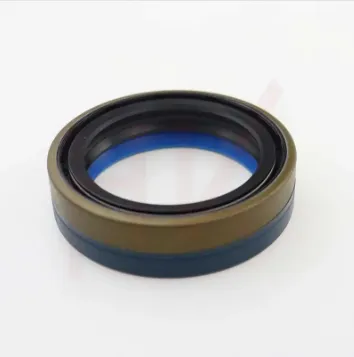Oct . 04, 2024 21:23 Back to list
replacing wiper seal on hydraulic cylinder
Replacing Wiper Seal on Hydraulic Cylinder A Comprehensive Guide
Hydraulic cylinders are integral components in various machinery, including construction equipment, agricultural machinery, and manufacturing devices. These cylinders use hydraulic fluid to generate motion, making them vital for performing tasks like lifting, pushing, and pulling. One of the critical components of a hydraulic cylinder is the wiper seal, which prevents dirt, debris, and moisture from entering the cylinder and contaminating the hydraulic fluid. Over time, the wiper seal can wear out or become damaged, leading to leakage and reduced efficiency. In this article, we will explore the process of replacing a wiper seal on a hydraulic cylinder, ensuring optimal performance and longevity.
Understanding the Wiper Seal's Role
The wiper seal, often referred to as a dust seal, is located at the top of the hydraulic cylinder's rod. Its primary function is to keep contaminants out while also assisting in retaining some hydraulic fluid. A damaged wiper seal can lead to contamination of the hydraulic fluid, which can result in accelerated wear of internal components, reduced efficiency, and potentially costly repairs.
Signs of Wiper Seal Failure
Before replacing a wiper seal, it's essential to identify the signs of failure. Common indicators include 1. Oil Leakage If you notice hydraulic fluid pooling under the equipment or around the cylinder, this may indicate a damaged seal. 2. Abrupt Movement A jerky or inconsistent motion in the hydraulic cylinder can suggest it is not operating correctly due to seal failure. 3. Increased Friction or Noise Unusual sounds or increased resistance while operating the machinery can also signal that the wiper seal needs replacement.
Tools and Materials Needed
To replace a wiper seal, you will need the following tools and materials - A new wiper seal that matches the specifications of your hydraulic cylinder. - A variety of hand tools, including wrenches and socket sets. - A seal puller or flathead screwdriver (preferably plastic to avoid damaging the cylinder). - Clean rags or paper towels for cleanup. - Hydraulic fluid for refilling. - Safety gloves and goggles for personal protection.
Step-by-Step Guide to Replacing the Wiper Seal
1. Safety First Begin by ensuring that the machine is turned off, depressurized, and secured. Remove any accessories or attachments that could interfere with the procedure.
replacing wiper seal on hydraulic cylinder

2. Remove the Cylinder Detach the hydraulic cylinder from its mounting points. Use the appropriate tools to loosen and remove any bolts or pins that hold the cylinder in place.
3. Inspect the Cylinder Before replacing the seal, inspect the cylinder's rod and bore for scratches or damage. Clean the area thoroughly to prevent introducing contaminants into the new seal.
4. Remove the Old Wiper Seal Use a seal puller or a flathead screwdriver to carefully remove the old wiper seal from its groove. Be cautious not to scratch the surface of the cylinder while doing this.
5. Prepare the Groove Clean the groove where the wiper seal sits. Make sure there is no dirt or debris before installing the new seal.
6. Install the New Wiper Seal Gently press the new wiper seal into place. You can use a suitable tool or your fingers, provided you ensure an even fit without distorting the seal.
7. Reassemble the Cylinder Once the new seal is securely in place, reassemble the hydraulic cylinder. Make sure all components are aligned correctly, and fasten them according to the manufacturer's guidelines.
8. Refill and Test After reinstallation, refill the hydraulic cylinder with the appropriate hydraulic fluid. Check for leaks and test the functionality of the cylinder by operating the machine.
Conclusion
Replacing the wiper seal on a hydraulic cylinder is a straightforward maintenance task that can significantly enhance the performance and lifespan of the machinery. By regularly inspecting the seal and addressing any signs of wear, operators can prevent more extensive damage and costly repairs. Always prioritize safety and follow best practices to ensure a successful replacement and optimal operation of hydraulic systems.
-
TCN Oil Seal Metal Ring Reinforcement for Heavy Machinery
NewsJul.25,2025
-
Rotary Lip Seal Spring-Loaded Design for High-Speed Applications
NewsJul.25,2025
-
Hydraulic Cylinder Seals Polyurethane Material for High-Impact Jobs
NewsJul.25,2025
-
High Pressure Oil Seal Polyurethane Coating Wear Resistance
NewsJul.25,2025
-
Dust Proof Seal Double Lip Design for Construction Equipment
NewsJul.25,2025
-
Hub Seal Polyurethane Wear Resistance in Agricultural Vehicles
NewsJul.25,2025
-
The Trans-formative Journey of Wheel Hub Oil Seals
NewsJun.06,2025
Products categories
















